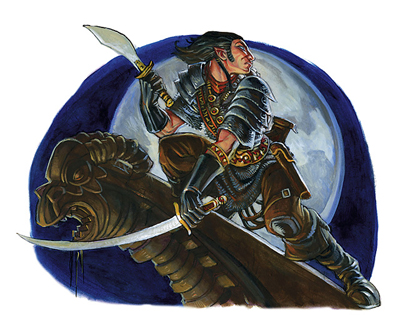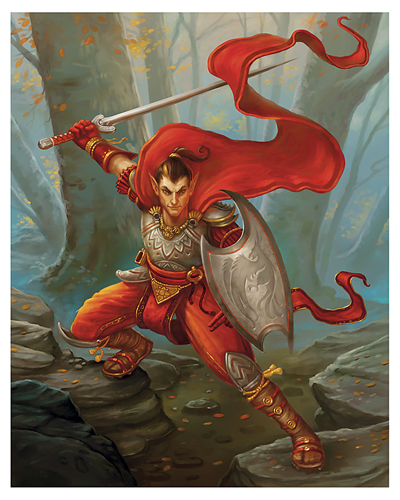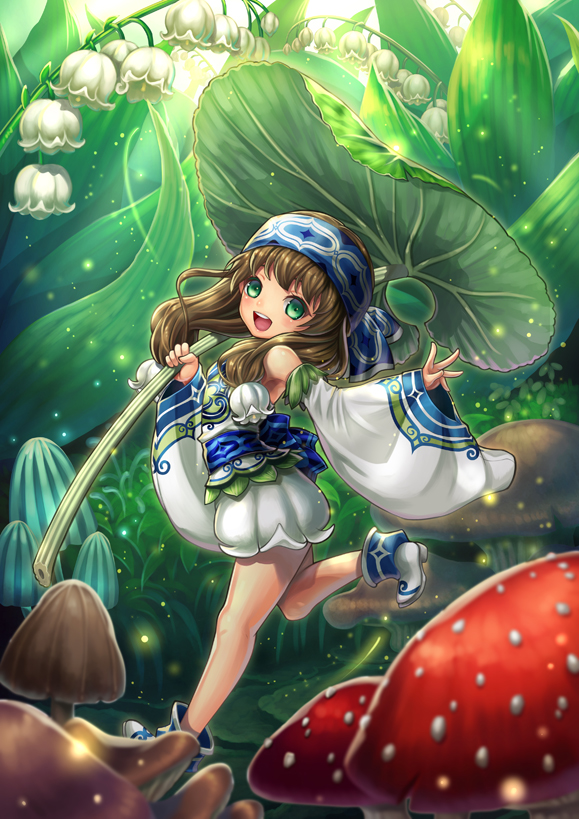Quick, everyone, without googling, name 6 Kara-Tur deities!
I did want to come back to this. Its a trick question!
Here is the sum total of the 1e Oriental Adventures discussion of gods:
1e OA page 140:
Religion
The average man of Kara-Tur does not attend a church or temple on a regular basis, indeed the concept of a church as a separate entity clearly identified from all others is somewhat strange to him. For him, religion organized on such a scale does not exist. However, this does not mean the average man is not pious and respectful of religion, nor that the temples and monasteries are in total anarchy. It is just that the attitude toward religion is vastly different.
There are several different religions in Kara-Tur, each with its own set of beliefs and practices—The Way, The Path of Enlightenment, The Eight Million Gods, ancestor worship, the cult of the state, and more. Each is distinct, teaching enlightenment, perfection, and salvation according to its own methods. Each believes it is the correct path. However, in practice, few common people follow the beliefs of strictly one religion. Instead, they take no chances, not wishing to offend one deity or another. As a result, commoners make offerings, listen to sermons, celebrate holy days, and pray at temples of many different religions. Nor is this considered unusual or incorrect.
The various religions, when compared to those of the west, are extremely tolerant of one another. Several religions will be practiced in the same area, their temples often side by side. It is not unknown for a sect to adopt some of the practices or outward forms of another religion. These adoptions are re-explained according to the beliefs of the religion. Thus minor gods may be adopted and identified as different forms of a deity already worshiped by the religion. The clergy are faithful to their particular religion, not practicing any other. Although they would like the peasants to follow only their teachings and strive for this, they know that the common folk follow many different beliefs at once.
In addition, religions are often divided into sects. The various sects of a religion all have the same overall goal and beliefs, but disagree as to what is the best method to pursue these beliefs. Some may hold to chanting a phrase over and over again, another thinking a different phrase is required, and a third foregoing chanting for breathing and physical exercises. Each believes its methods are the correct way. Often fierce rivalries develop between different sects, leading to feuds and violent clashes. Indeed, sects of the same religion are often more hostile to each other than they are to entirely different religions!
So not one named deity. Are the Eight Million Gods the Japanese pantheon from the 1e Deities and Demigods with Raiden? The Chinese pantheon with Kuan Yin and the Eater of the Gods? Unspecified.
I could name one definite though,
MAD MONKEY!
Also I had read that one of the later Kara Tur developed areas, one of the South Asian fantasy areas worships the Vedic/Indian Gods from Deities and Demigods/Legends and Lore so you get the ones everybody knows like Shiva, Kali, Vishnu, Rudra, etc. which became canonical FR gods.






